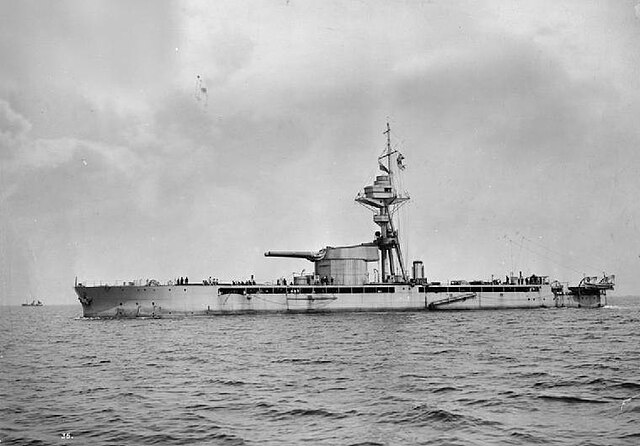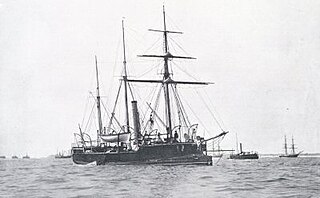Loading AI tools
British shipbuilding company (1852–1933) From Wikipedia, the free encyclopedia
Palmers Shipbuilding and Iron Company Limited, often referred to simply as "Palmers", was a British shipbuilding company. The company was based in Jarrow, County Durham, in north-eastern England, and had operations in Hebburn and Willington Quay on the River Tyne.
 The launch of HMS Queen Mary beneath the distinctive gantry cranes of Palmers' yard | |
| Company type | Public |
|---|---|
| Industry | Shipbuilding |
| Founded | 1852 |
| Fate | Collapsed 1933 |
| Successor | Armstrong Whitworth |
| Headquarters | Jarrow, UK |


The company was established in 1852 by Charles Mark Palmer as Palmer Brothers & Co. in Jarrow.[1] Later that year it launched the John Bowes, the first iron screw collier.[1][2] By 1900, the business was known as Palmers Shipbuilding and Iron Company.[3][Fn 1] At that time, besides building ships, it manufactured and processed its own steel and other metals, and its products included Reed water tube boilers and marine steam engines.[6][Fn 2]
By 1902, Palmers' base at Jarrow occupied about 100 acres (41 hectares) and included 0.75 miles (1.2 kilometres) of the southern bank of the River Tyne, and employed about 10,000 men and boys.[8] In 1910, Sir Charles Palmer's interest in the business was acquired by Lord Furness who, as Chairman, expanded the business by acquiring a lease over a new graving dock at Hebburn from Robert Stephenson and Company.[9] In 1919, Palmers laid down the SS Gairsoppa, which was sunk by a German U-boat in 1941, causing the loss of 84 lives and 200 long tons (203 tonnes) of silver.[10][11]
The Great Depression began in 1929, all but destroying the shipbuilding industry, which did not rebound until the Second World War. In 1931, Palmers posted a loss of £88,867, equivalent to £7,627,000 in 2023. The company received a moratorium from its creditors in order to extend repayment. In January 1933, the majority of the company's unsecured creditors met in London and agreed to extend the moratorium a further six months.[12]
Palmers was unable to survive and collapsed by the end of 1933. The company's blast furnaces and steel works—which covered 37 acres—were put up for auction.[13] The Jarrow yard was sold to National Shipbuilders Securities, which closed it down in order to sell it, causing much unemployment and leading to the Jarrow March.[14] After the shipyard closed, following support from the industrialist, Sir John Jarvis, the site was used the engine shop as a steel foundry for another 18 months.[15]
The company retained the yard at Hebburn and was acquired by Armstrong Whitworth, becoming Palmers Hebburn Company.[16] In 1973, Vickers-Armstrongs, successor to Armstrong Whitworth, sold the Palmers Dock at Hebburn to Swan Hunter and developed it as the Hebburn Shipbuilding Dock.[17] This facility was acquired from the receivers of Swan Hunter by Tyne Tees Dockyard in 1994. They sold it to Cammell Laird in 1995. When Cammell Laird entered receivership in 2001, the dock was acquired by A&P Group.[18][19] The yard remains in use as a ship repair and refurbishment facility.[20]
Ships built by Palmers included:









Seamless Wikipedia browsing. On steroids.
Every time you click a link to Wikipedia, Wiktionary or Wikiquote in your browser's search results, it will show the modern Wikiwand interface.
Wikiwand extension is a five stars, simple, with minimum permission required to keep your browsing private, safe and transparent.